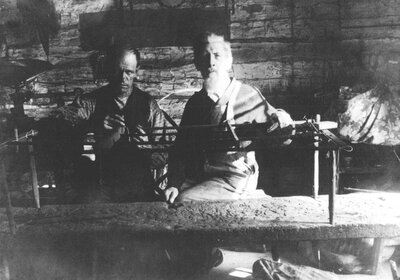The Graf Family and Weaving in Port Colborne
Introduction
The story of weaving in the local community begins with the Indigenous peoples who have lived and travelled in the Niagara area for thousands of years. When settlers arrived, they brought their own weaving traditions with them. Here in Ontario, there were two main settler traditions of weaving – Scottish/ Irish and German (often via Pennsylvania). Nearly all professional handweavers were men despite the general association of weaving with “women’s work.” Women usually only wove for household use, though there are some exceptions. Most professional female weavers were unmarried or widowed.
F. Edward Graf (1826-1904) emigrated from Prussia as a 16 year old with his father, stepmother, and siblings. The Graf family landed in New York City and moved to Buffalo. Soon after Edward Graf moved across the border, settling in the hamlet of Gasline, where he spent the rest of his life as a professional hand weaver. Graf was one of small number of professional hand weavers in Niagara, a group which included Samuel Fry, Moses Grobb, Richard Banks, Frederick New, and Wilhelm Armbrust. Later, one of Graf’s daughters, Matilda Graf, and one of his sons, C. Albert Graf, became professional weavers as well.

At work in the Graf workshop Details
Today, the Graf family are best remembered for the fancy, or jacquard coverlets they produced in the mid and late nineteenth century. However, the textiles which have survived create a skewed impression of the work of handweavers like the Grafs. Most of the examples of weaving found in museums today are the most valuable or ornate which a weaver might produce, like jacquard coverlets. They have lasted because their owners treasured and preserved them. The Grafs, like other handweavers, produced mostly everyday items, like blankets and linens, but these have not survived. They were used until they wore out and then were often repurposed into things like rag rugs or quilts. The Port Colborne Museum does have some rare examples of the more ordinary woven textiles which came from the Graf looms, along with the fancy coverlets.
Visitors to the museum can view one of the smaller Graf looms on exhibit in the timber cabin.
